merch isn’t dead, you’re just doing it wrong
or: I went to MIT and all I got was this lousy t-shirt (and a blog post)
Merch is dead. Or so says Big Fashion™.
Today’s Syllabus:
A brief history of the rise & fall of merch
What MIT taught me about merch
Does good merch exist? And if so, what makes it “good”?
If you want something done right, do it yourself
Closing remarks
~**~ this post cuts off in email so read in app or browser ~**~
Required Reading (obligatory context)
Merch, short for merchandise, is a longtime force in fashion— surging in popularity during the 70s Rock and Roll era with band tees and posters, and then more recently, in the 2010s with collabs and online platforms. But why is merch so appealing?
Merch has a low barrier to entry. It’s easy and cheap to both make and buy. Anyone can screen print a tee. Or nowadays, find a DIY drop-shipped cheapie for literally anything on Etsy.
Merch reinforces personal identity. How would you know who your are without an obscure bookstore tote to remind you? Merch feeds into the basic human desire to establish a sense of self. And of belonging…

image source: Extracurricular Merch signals like-mindedness and stimulates community. For example, you might carry your emotional support special edition Loveshackfancy Stanley Quencher in hopes of connecting with a fellow tween girlypop of good taste.
Yet, the keys to merch’s explosive growth also opened the door to its inevitable doom.
Low barrier to entry opens the flood gate to low-quality product (see: enshittification). Anyone can design and produce merch. That doesn’t mean they should1.
Over-saturation. When a new collab drops every other day, keeping up is no longer exciting. It’s a chore.
The identity paradox. Anything can have merch and anyone can buy merch. Thus, your unique persona might also be found on a TJ Maxx discount rack!
To establish an in-group identity via publicly available products is paradoxical— especially in 2025 where dupes and resellers abound.
“If merch is a way to find the like-minded, it’s also about excluding others. Which is now impossible”2
The rise of Quiet Luxury. Logos are taboo and The Row’s blanded accoutrements signify status. Thus, merch, inherently branded, reads as cringe.
Society is sick of ads, capitalism, and its douchebag billionaires.
“I don’t wanna be a walking billboard… At the end of the day, merch is advertising.”3
Branding yourself is limiting. As much as humans crave identity and labels, they also crave freedom.
So can merch be resurrected or is it eternally dead?
Can it ever escape its paradoxical appeal and ick-factor?
I say yes! And I’ll use the epitome of first world problems4 to prove it.
n = 0 (the blueprint)
As an MIT alum *cringe*— I’m constantly reminded of how bad our merch is. I would totally rep my alma mater, if the rep weren’t so insulting to my style.
Most MIT merch is uninspired, poor quality, obnoxious, or just plain ugly.
Plus, who wants to wear MIT in mega caps lock just so every person you meet can say: “Wow! You must be like, really smart!”
The one exception is the Brass Rat.
“WTF is a brass rat” you ask?
It’s MIT’s version of a class ring.
It’s objectively unflattering. And totally awesome.
But, the Brass Rat is merch. So what makes it work?
1. It’s unique— Not only is the ring so MIT, but every year the rat evolves. It’s personalized by and for the graduating class.
For example, the stars and other easter eggs on my brass rat align to form a caffeine molecule-shaped constellation.

In contrast, despite sharing a name and a mascot, the class of 1982 Brass Rat looks much different:
2. It’s ritualized and promotes community. The hoopla around the ring’s creation and delivery is unmatched. Being selected for ring comm (the team who develops the ring and its delivery) cements you as MIT cool.
And Ring Premiere, the first look at that year’s design, is MIT’s superbowl.
Ring Delivery, situated halfway through one’s MIT journey, is a long-awaited exhale of bated breath held throughout countless midterms and hours of studying.
Even trying on the different rings with your friends in the period between premiere and delivery is its own fun bonding experience.
Sure, the Brass Rat feels slightly cult-y, but it’s also cunt-y!
3. It’s unserious. The Brass Rat pokes fun at MIT and its prestige. I mean c’mon, a giant rat etched into 14k gold is inherently ironic.
Upon graduation you earn the right to turn your Brass Rat to face outward so that it’s “shitting on the world” instead of “shitting on you” (as MIT did for 4 years).
4. It’s elitist but not ostentatious. The Brass Rat is subtle. It doesn’t scream MIT in 1000-pt, HEX: #750014, Neue Haas Grotesk.
It’s more IYKYK5. I have yet to spot a brass rat in the wild but if I did, I’d be jazzed!
However, if you’re feeling extra “I went to school in Boston,” should someone ask— “what’s that?”— you can just say “a class ring”— full stop.
TLDR; The Brass Rat will ALWAYS be cool— but it’s just one example of well-done merch. Let’s walk through more examples to develop a reliable algorithm for judging merch!
PSETing (practice problems)
The I <3 NY tee might be the most iconic merch of all time. But did you know it was also the OG6 rebrand? In the 70s, New York released the tee as part of a campaign to transform the city’s image from crime-ridden to tourist destination. And it worked. The I <3 NY t-shirt is simple, beautiful, functional, and historically significant.
Good merch is iterative, not derivative— it takes history one surprising step further.
Though more-so branding than merch, Levi’s defined the modern jean silhouette with its red-tabbed, arc-embroidered back pockets. This legendary decal does double duty— developed to flatter the butt and for workers to keep small tools handy.
Good merch thinks function-first.
Good merch is so intentional it hurts.
If there is branding or a logo, it’s usually subtle and it always has a deeper meaning.
The logo-less Brandy Melville bags exude “I don’t care” cool-girl energy.
Skims, Kim K’s merch, defined the elevated basics genre and successfully rode out microtrend waves with its subtle but consistent branding.
On the other hand, bad merch is lazy.
For example, most fraternity/sorority merch is thoughtless and repetitive.
The recently popularized Chicago caps lack substance.
Taylor’s Eras Tour merch looks like my 6th grade tumblr edits.
And if you buy someone a pair of polyester socks/underwear with your face/dog cheaply screen-printed on, please go touch grass.
Good merch is good-humored and “toes the line of sincerity and satire”7. At the very least it’s self aware, and at best, it’s gut-busting and genre-breaking.
Clairo’s charm hoodie wordlessly nails her typical fan’s vibe on the head.
Animal House’s iconic “college” sweater parodies historic prep/ivy league iconography.
Good merch builds community and encourages creativity.
Grateful Dead merch is iconic and timeless. Why? It’s aesthetically pleasing, unique, and meaningful. But more importantly, because fans made their own merch, which they later sold to each other at concerts. The result was an immortal culture of devotees— deeply connected to the brand and to each other. Deadheads were the original merch open sourcers.
Last but not least, good merch is pretty.
Your concept can be clever as all get out, but if the execution ain’t cute, I’m not wearin’ it. Same goes for quality. Get your synthetics outta here! 100% cotton or bust baby!
Finals Szn
What kind of straight-A student would I be if I didn’t put theory into practice? I got so fed up with MIT’s bad merch that I created my own: a pine-green dad cap gilded with “mens et manus”.
“Mens et manus”, which translates to “mind and hand”, is the MIT motto.
I plucked this piece of lore because the saying resonates with me— the dual importance of theory AND practice. Of thinking AND doing. Of the conceptual mind AND the physical body.
And because it doesn’t scream MIT— visually, the font is small and dainty (f*ck yeah white space!)— semantically, the hat literally does not say “MIT”. It’s not a brag or an exclusionary in-group identifier.
Sure, a fellow alum might recognize their school’s motto. But outside of that more intimate connection, the saying still holds significance.
If someone asks about your hat, you could bring up MIT. Or, you could have a lovely, completely unrelated philosophical discussion*. This is my favorite aspect of merch— the opportunity for connection. Though I know more introverted folk absolutely hate it.
*I’m editing this post after living out this exact scenario, where my hat sparked an unrelated convo about Jewish drag kings and communism. This product is UAT8 approved!
Of course I’m still a pretentious lit chick at heart, hence the Latin.
And the colors? I’m a soft summer and MIT red simply does not flatter me.
Commencement
If you buy merch to feel special, validated, or cool— you will be disappointed. Status signals decay over time, as do poor quality garments.
So buy (or create!) merch that sparks connection and laughter— merch that’s functional and thoughtful— merch that expresses your identity and speaks to your soul. Because the only thing that’s timeless when it comes to fashion is YOU.
Whether you like it or not, we’re all brands now. In person and online, at the office and on LinkedIn, on Instagram or even within your friend groups and community. So you might as well get damn good at branding.
Of course this is all in good fun, YOU are multi-faceted and ever-evolving. Merch can never perfectly reflect an entire human.
However, you can encourage brands, artists, and establishments to improve. Or, like me, get obsessed with making your own, better merch.
The unintended side effect? Shopping transforms from pure consumption into an act of creation.
~~**~~
FYI (for your inspo), here are some of my future merch ideas:
Chicago. Has vast untapped rebrand potential a la I <3 NYC tee. The currently popular Chicago baseball cap does my city a disservice.
Chiclets (my blog). Once I nail down my branding, I’m 100% printing business cards a la
.RHAP. I’m this 🤏 close to DM-ing9 my favorite podcast, which has dreadful merch, about a job designing for them.
Climbing gear. Needs to put learn how to put the fun in functional. It was nearly impossible to find cool climbing shoes10.
xx
™ (the brand, not the person)P.S. for my boomer readership who requested a slang dictionary— see the footnotes:
not in an elitist way, but in a “seriously? you put absolutely no thought into that” way
Samuel Hine in GQ’s The End of Merch
why does nobody say “first world problems” anymore? Has that been cancelled? Or is it just passé?
IYKYK = if you know you know
OG = original
The End of Merch (GQ)
User Acceptance Testing, i.e., beta testing: a dev phase where real users test a product to make sure it meets their needs.
DM = direct message; a more intimate form of contact over social media





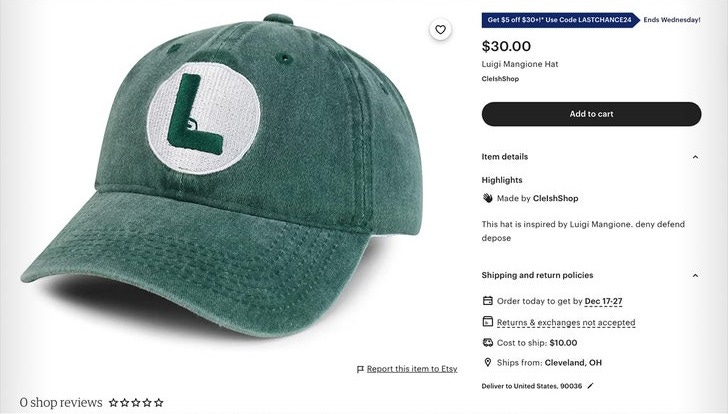
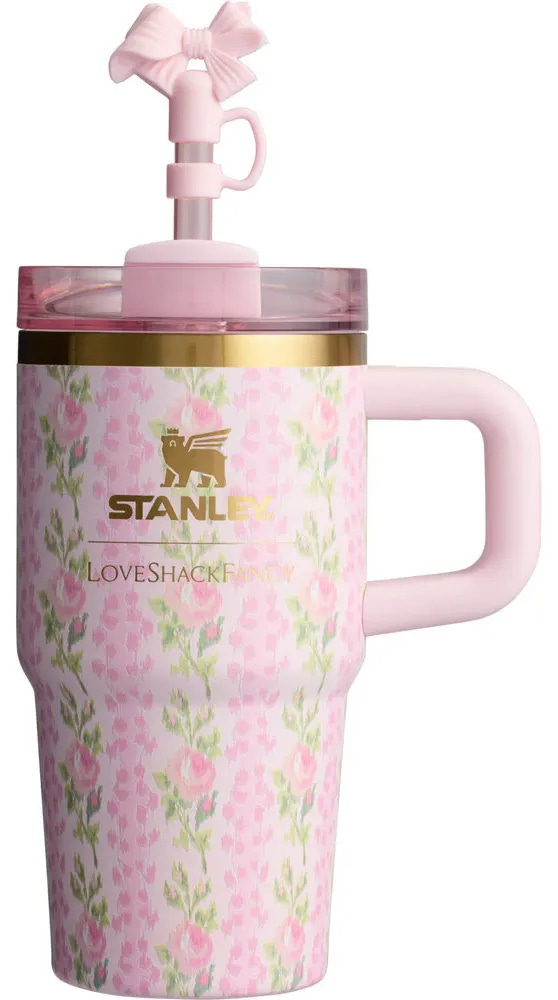





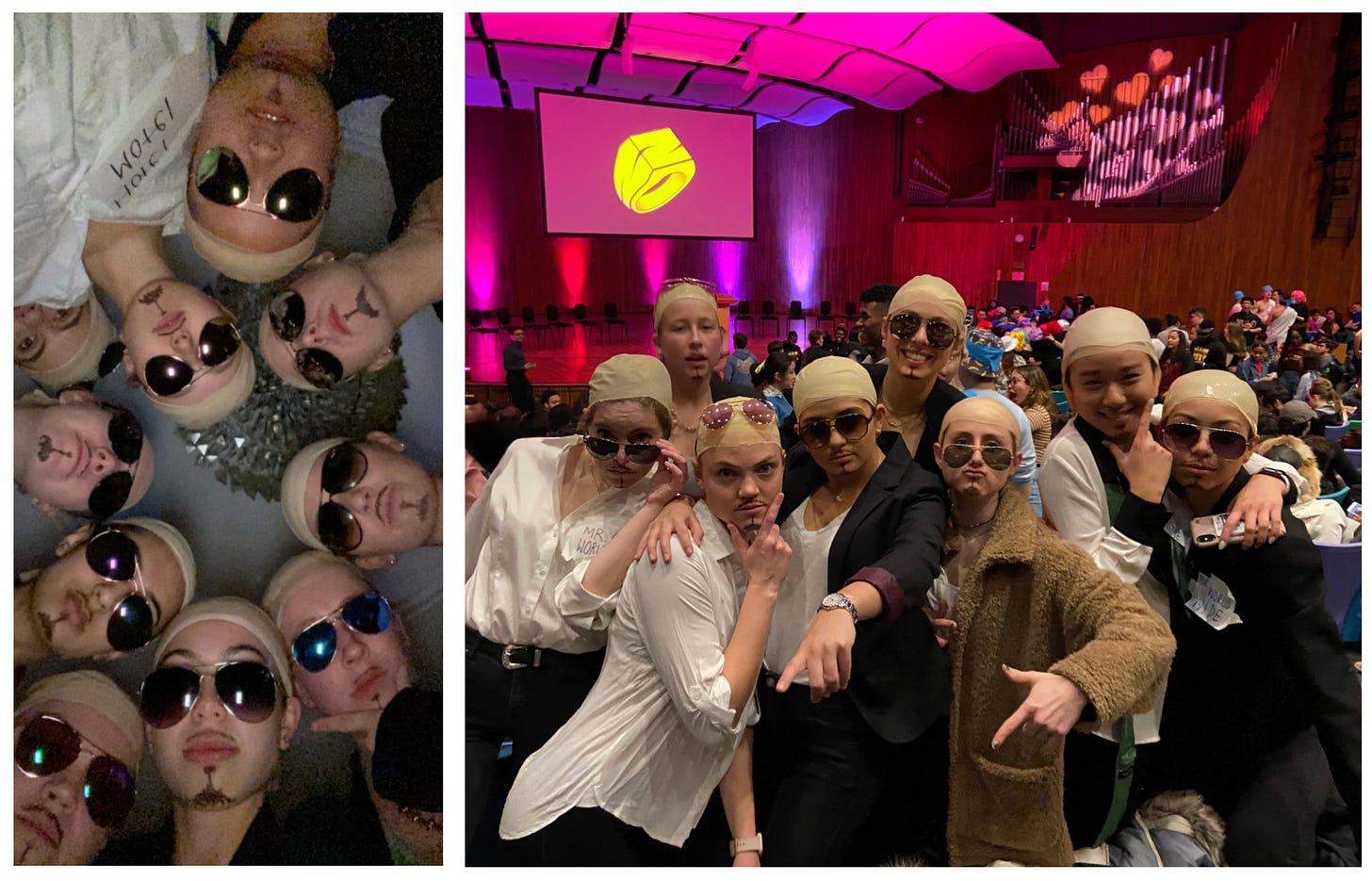
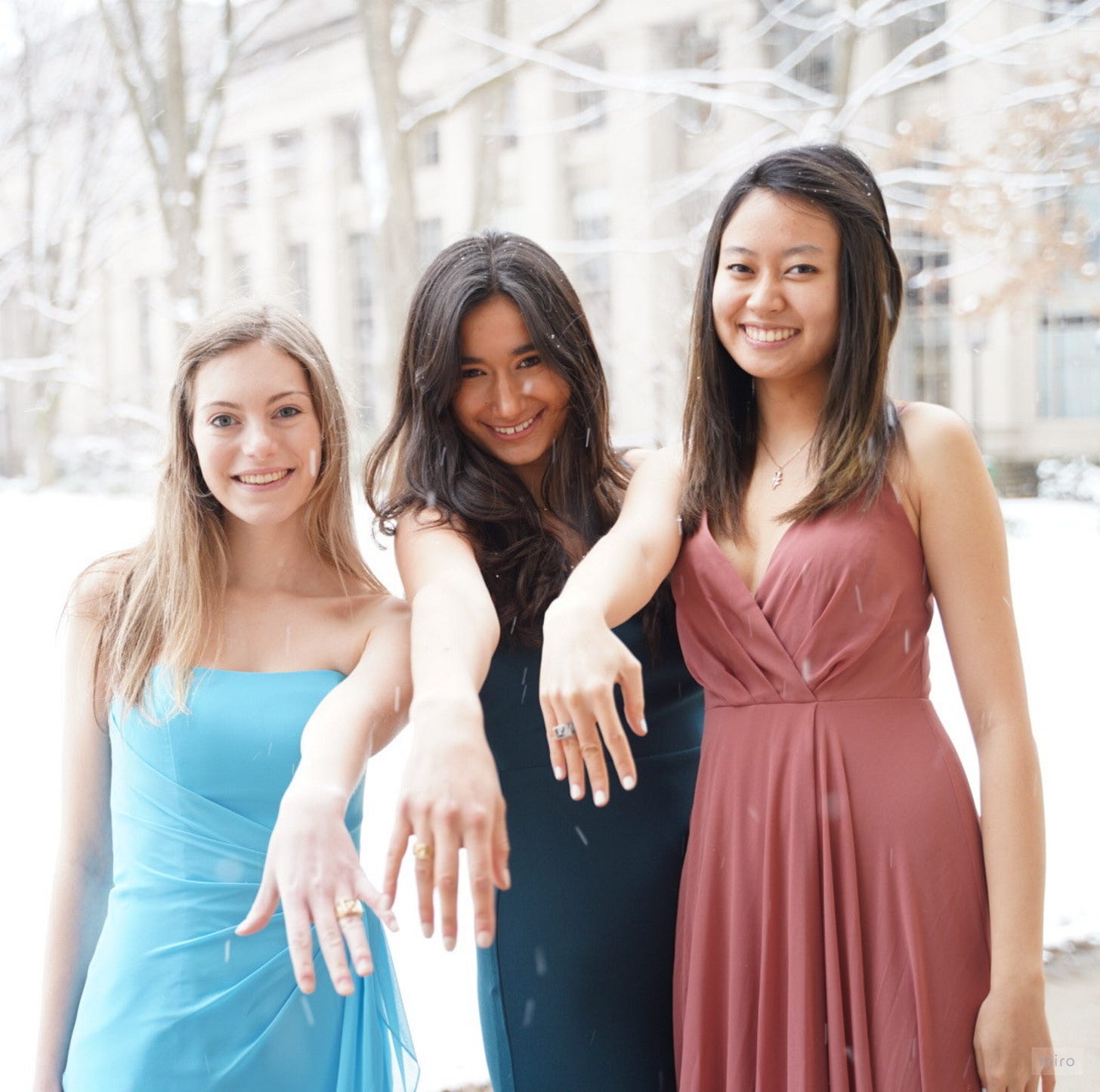


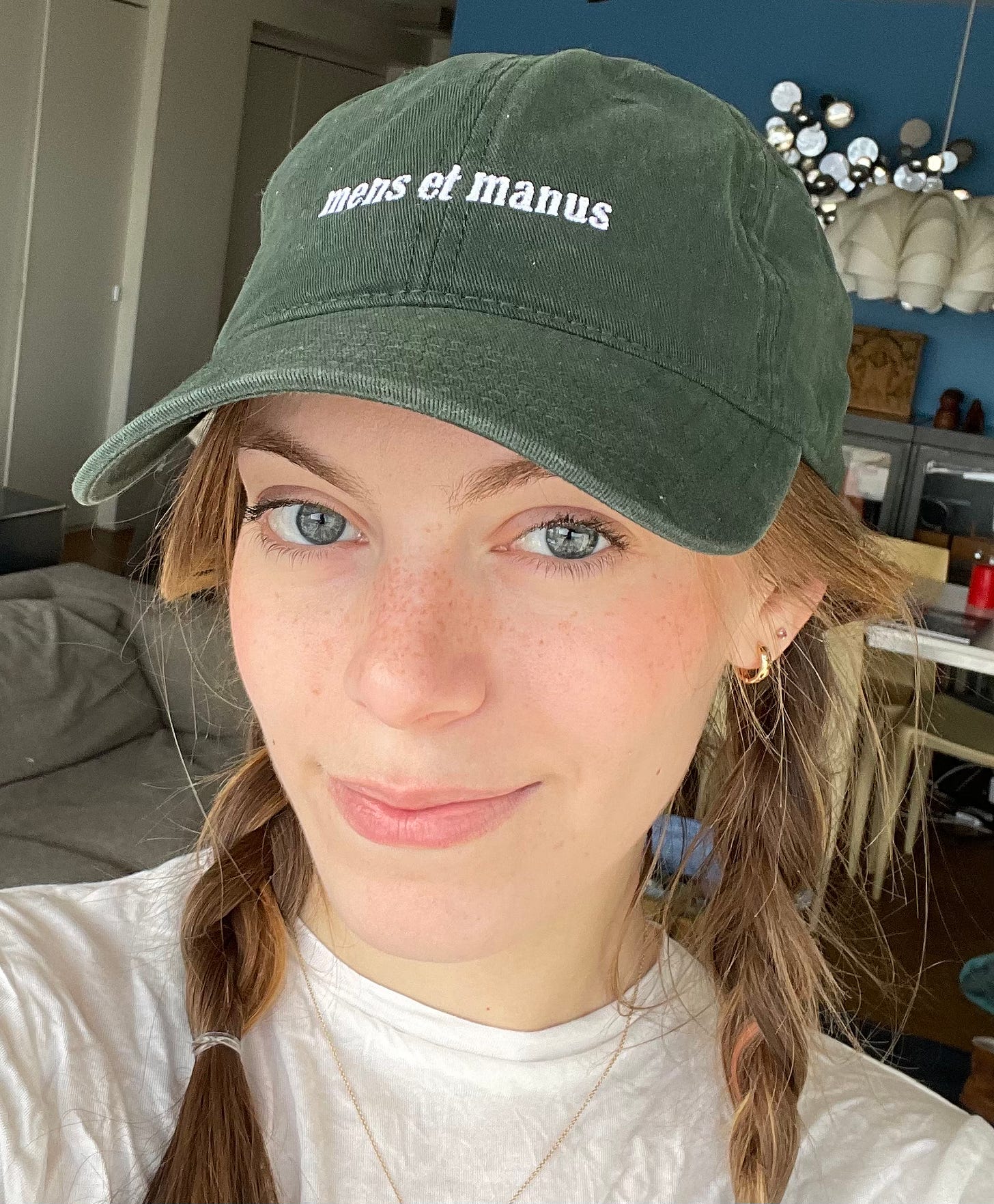
Wow, the merch x brass rat analysis I never knew I needed! The number of times I browsed the coop *just in case* a new (even slightly plausibly wearable) shirt design popped up...
I loved this. So fun and well written.